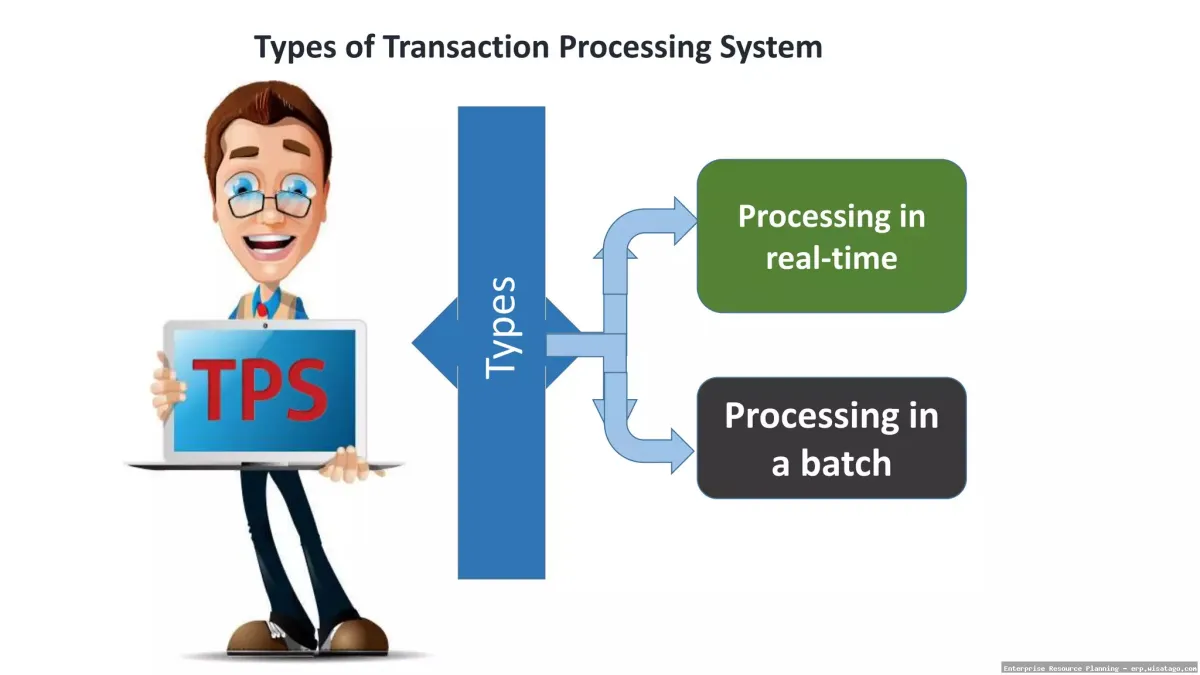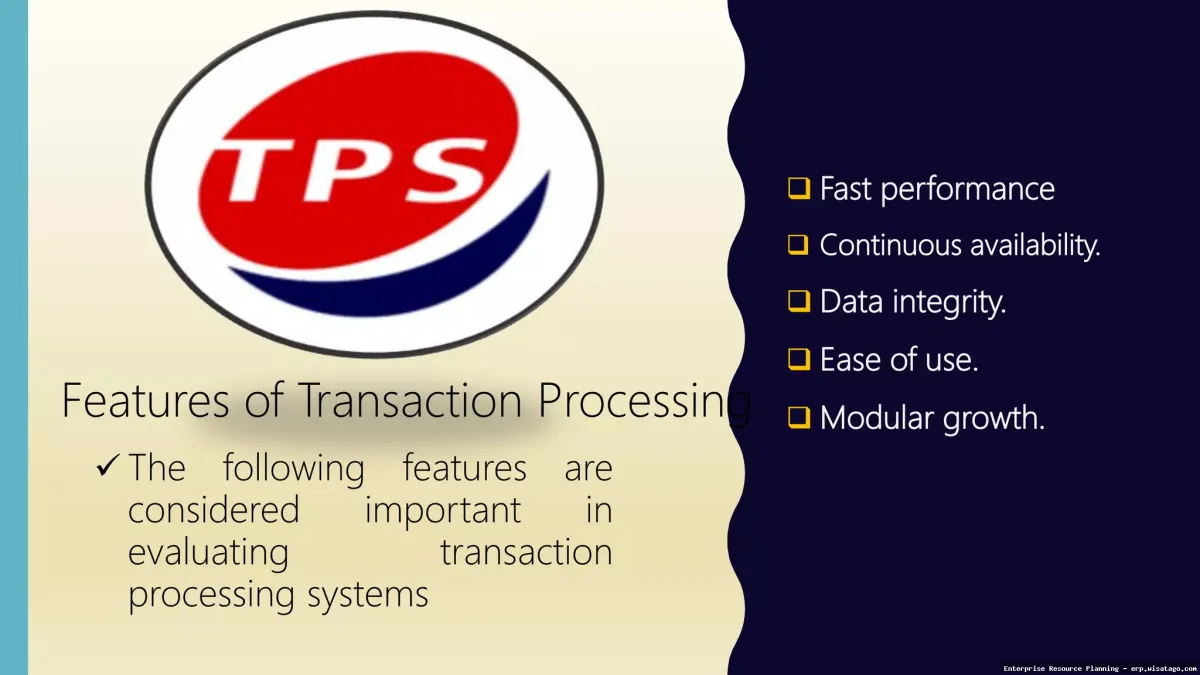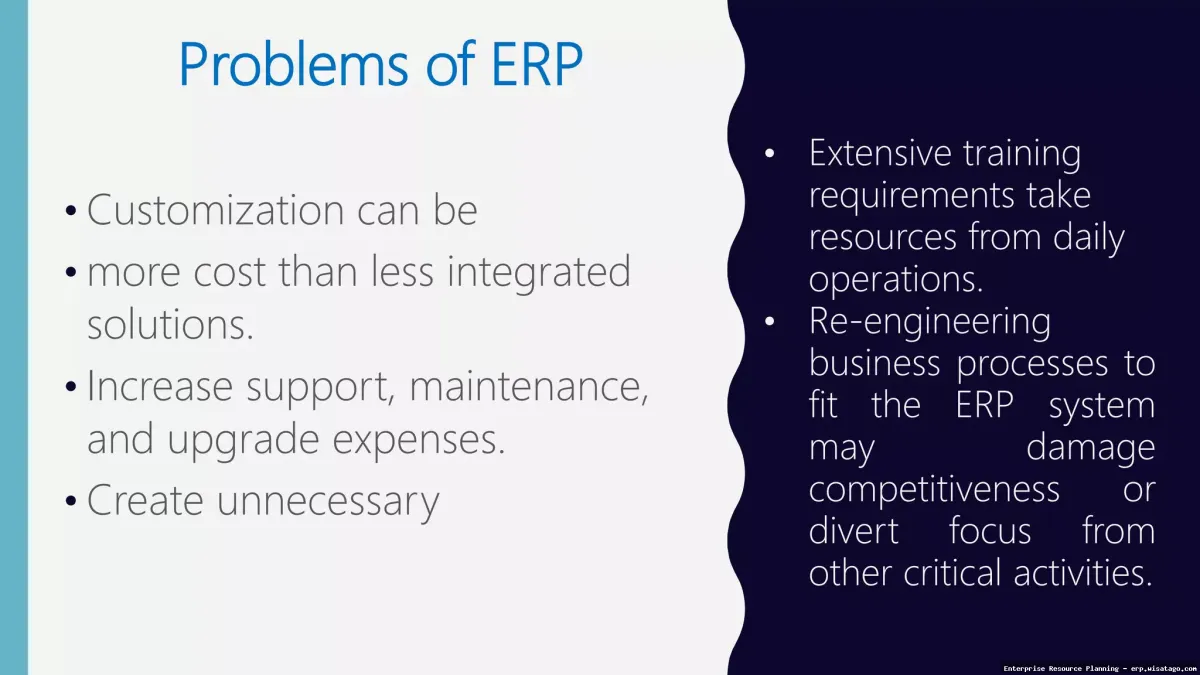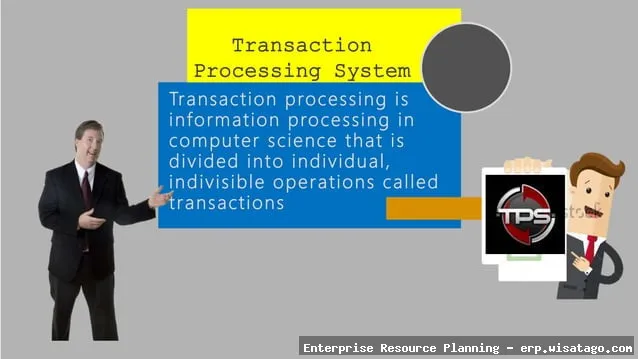High-Volume Transaction Processing In Enterprise ERP: Complete Guide, Features and Details
In today’s fast-paced business environment, enterprises are constantly dealing with a massive influx of data and transactions. From sales orders and inventory updates to financial transactions and customer interactions, the sheer volume can be overwhelming. Enterprise Resource Planning (ERP) systems are designed to manage these complex processes, but when dealing with high-volume transaction processing, the demands on the ERP system are significantly amplified. This article explores the intricacies of high-volume transaction processing within an ERP system, providing insights into its features, challenges, and how to optimize it for peak performance.
Having worked with ERP implementations for over a decade, I’ve seen firsthand how critical a robust and scalable system is for handling high transaction volumes. A poorly configured or inadequately resourced ERP can quickly become a bottleneck, leading to delays, errors, and ultimately, lost revenue. Conversely, a well-designed and optimized system can provide a significant competitive advantage, enabling businesses to respond quickly to market changes and efficiently manage their operations.

This comprehensive guide will delve into the core concepts of high-volume transaction processing in ERP, covering topics such as the key features required, the potential pain points businesses face, and practical strategies for selecting and implementing the right ERP solution. Whether you are a business leader considering a new ERP system or an IT professional responsible for maintaining an existing one, this article will provide valuable insights to help you navigate the complexities of high-volume transaction processing and ensure your ERP system can handle the demands of your business.
Understanding High-Volume Transaction Processing in ERP
High-volume transaction processing refers to the ERP system’s ability to efficiently and accurately handle a large number of transactions within a specific timeframe. These transactions can encompass a wide range of business operations, including:
- Order Management: Processing numerous customer orders, tracking shipments, and managing invoices.
- Inventory Management: Updating inventory levels in real-time as goods are received, shipped, or consumed.
- Financial Accounting: Recording financial transactions, generating reports, and managing accounts payable and receivable.
- Manufacturing: Tracking production processes, managing work orders, and monitoring resource utilization.
- Customer Relationship Management (CRM): Managing customer interactions, tracking sales leads, and providing customer support.
Effectively managing high-volume transactions is crucial for businesses that operate at scale or experience seasonal peaks in demand. A failure to do so can lead to system slowdowns, data inconsistencies, and ultimately, a negative impact on customer satisfaction and profitability.
Key Characteristics of High-Volume Environments
Several factors characterize high-volume transaction processing environments:
- High Throughput: The system must be capable of processing a large number of transactions per unit of time.
- Low Latency: Transactions should be processed quickly with minimal delay.
- Data Integrity: Accuracy and consistency of data are paramount, as errors can quickly propagate through the system.
- Scalability: The system must be able to handle increasing transaction volumes without performance degradation.
- Reliability: The system should be highly available and resilient to failures.
Essential Features of an ERP for High-Volume Processing
Not all ERP systems are created equal when it comes to handling high transaction volumes. Several key features are essential for ensuring optimal performance in these environments:
Scalable Architecture
A scalable architecture is the foundation for handling high-volume transactions. This includes:
- Horizontal Scalability: The ability to add more servers or resources to the system to handle increased load.
- Vertical Scalability: The ability to increase the processing power of existing servers.
- Cloud-Based Deployment: Cloud ERP solutions offer inherent scalability and flexibility, allowing businesses to easily scale resources up or down as needed.
Database Optimization
The database is the heart of the ERP system, and its performance is critical for high-volume transaction processing. Essential database optimization techniques include:

- Indexing: Creating indexes on frequently queried columns to speed up data retrieval.
- Partitioning: Dividing large tables into smaller, more manageable partitions.
- Caching: Storing frequently accessed data in memory for faster access.
- Query Optimization: Tuning SQL queries to improve their performance.
Asynchronous Processing
Asynchronous processing allows the ERP system to handle non-critical tasks in the background, without blocking the processing of more important transactions. This can significantly improve overall performance. Examples include:
- Message Queues: Using message queues to decouple different components of the system and allow them to communicate asynchronously.
- Batch Processing: Processing large batches of transactions during off-peak hours.
Real-Time Data Integration
Seamless integration with other systems, such as e-commerce platforms, CRM systems, and supply chain management systems, is crucial for high-volume transaction processing. Real-time data integration ensures that data is synchronized across all systems, eliminating data silos and improving decision-making.
Advanced Analytics and Reporting
The ability to analyze transaction data in real-time is essential for identifying bottlenecks, monitoring performance, and making data-driven decisions. Advanced analytics and reporting tools can provide valuable insights into transaction patterns, helping businesses optimize their operations and improve efficiency.
Common Challenges in High-Volume ERP Environments
While ERP systems offer numerous benefits, managing them in high-volume environments can present several challenges:
Performance Bottlenecks
Performance bottlenecks can occur at various points in the system, including the database, application server, and network. Identifying and resolving these bottlenecks is crucial for maintaining optimal performance. This often requires specialized tools and expertise to analyze system performance and identify areas for improvement.
Data Integrity Issues
In high-volume environments, the risk of data inconsistencies and errors is significantly higher. Implementing robust data validation and error handling mechanisms is essential for ensuring data integrity. Regular data audits and reconciliation processes can also help identify and correct any discrepancies.
Scalability Limitations
Some ERP systems may have limitations in their ability to scale to meet the demands of high-volume transaction processing. Choosing an ERP system with a scalable architecture is crucial for future-proofing your investment. It’s also important to regularly assess your system’s capacity and plan for future growth.

Integration Complexities
Integrating the ERP system with other applications can be complex and time-consuming, especially in high-volume environments. Careful planning and testing are essential for ensuring seamless integration and avoiding data conflicts. Using standardized integration protocols and APIs can simplify the integration process.
Security Risks
High-volume transaction processing environments are often targeted by cybercriminals. Implementing robust security measures, such as firewalls, intrusion detection systems, and data encryption, is essential for protecting sensitive data. Regular security audits and vulnerability assessments can help identify and address potential security risks.
Strategies for Optimizing High-Volume ERP Performance
Optimizing ERP performance in high-volume environments requires a proactive and holistic approach. Here are some key strategies:
Regular Performance Monitoring and Tuning
Continuously monitor system performance metrics, such as CPU utilization, memory usage, and disk I/O, to identify potential bottlenecks. Use performance tuning tools to optimize database queries, application server settings, and network configurations.
Database Optimization
Regularly review and optimize database indexes, partitions, and caching strategies. Use database performance monitoring tools to identify slow-running queries and optimize them for faster execution. For more information, you can refer to ERP as an additional resource.
Code Optimization
Review and optimize custom code and extensions to ensure they are not contributing to performance bottlenecks. Use code profiling tools to identify inefficient code and optimize it for better performance.
Hardware Upgrades
If necessary, upgrade hardware components, such as servers, storage devices, and network infrastructure, to provide more processing power and bandwidth. Consider using solid-state drives (SSDs) for faster data access.

Load Balancing
Distribute the workload across multiple servers to prevent any single server from becoming overloaded. Use load balancing techniques to ensure that requests are evenly distributed across all available servers.
Archiving and Purging Data
Archive or purge old or irrelevant data to reduce the size of the database and improve query performance. Implement a data retention policy to ensure that data is retained for the appropriate amount of time.
Choosing the Right ERP System for High-Volume Needs
Selecting the right ERP system is a critical decision that can significantly impact your business’s ability to handle high-volume transaction processing. Consider the following factors when evaluating ERP systems:
Scalability and Performance
Ensure that the ERP system has a scalable architecture and is capable of handling your current and future transaction volumes. Ask for performance benchmarks and case studies from other customers with similar transaction volumes.
Industry-Specific Functionality
Choose an ERP system that is tailored to your industry and provides the specific functionality you need. This will reduce the need for customizations and simplify the implementation process.
Integration Capabilities
Ensure that the ERP system integrates seamlessly with your other business applications. Look for ERP systems that support standardized integration protocols and APIs.
Vendor Reputation and Support
Choose a reputable ERP vendor with a proven track record of providing excellent support and maintenance. Check customer reviews and references to assess the vendor’s reputation.

Total Cost of Ownership (TCO)
Consider the total cost of ownership, including software licenses, implementation costs, training costs, and ongoing maintenance costs. Compare the TCO of different ERP systems to determine the most cost-effective solution.
Conclusion
High-volume transaction processing is a critical requirement for many enterprises, and choosing the right ERP system and optimizing it for performance is essential for success. By understanding the key features, challenges, and strategies discussed in this article, businesses can ensure that their ERP system can handle the demands of high-volume environments and provide a significant competitive advantage. Remember to prioritize scalability, data integrity, and continuous monitoring to maintain optimal performance and achieve your business goals. The initial investment in a robust and well-configured ERP system will pay dividends in the long run, enabling your business to thrive in today’s demanding marketplace.
Conclusion
In conclusion, managing high-volume transaction processing within an Enterprise Resource Planning (ERP) system is no longer a ‘nice-to-have’ but a critical necessity for organizations seeking to maintain competitiveness and operational efficiency. We’ve explored the challenges posed by ever-increasing transaction loads, highlighting the importance of robust system architecture, optimized database management, and the strategic implementation of techniques like batch processing and data partitioning. Ignoring these considerations can lead to performance bottlenecks, data inconsistencies, and ultimately, a significant negative impact on business operations.
As businesses continue to generate and process data at an unprecedented rate, proactive investment in optimizing ERP systems for high-volume transaction processing is paramount. We encourage you to assess your current infrastructure, identify potential bottlenecks, and explore the solutions discussed in this article. For a more in-depth consultation on tailoring your ERP system to meet the demands of high-volume environments, please visit our website at https://www.example.com/erp-optimization to schedule a demo and learn how we can help you unlock the full potential of your ERP investment.
Frequently Asked Questions (FAQ) about High-Volume Transaction Processing in Enterprise ERP
What are the key challenges of processing high volumes of transactions in an Enterprise Resource Planning (ERP) system, and how can these challenges impact business operations?
Processing high-volume transactions in an ERP system presents several challenges. One significant hurdle is system performance; a surge in transactions can strain resources, leading to slow response times and potentially system crashes. This directly impacts operational efficiency, delaying order fulfillment, invoicing, and reporting. Another challenge is data integrity. With numerous transactions occurring simultaneously, ensuring accuracy and consistency becomes paramount. Errors in data entry or processing can lead to incorrect financial records, inventory discrepancies, and customer dissatisfaction. Finally, scalability is crucial. The ERP system must be able to adapt to increasing transaction volumes as the business grows. Failure to scale can result in bottlenecks and hinder future expansion. Addressing these challenges requires robust infrastructure, optimized database management, and efficient transaction processing techniques.
How can businesses optimize their Enterprise Resource Planning (ERP) system to effectively handle high-volume transaction processing, specifically focusing on database performance and transaction management?
Optimizing an ERP system for high-volume transaction processing involves several strategies. Firstly, database optimization is critical. This includes regularly tuning database indexes, partitioning large tables, and optimizing SQL queries to improve performance. Implementing caching mechanisms can also reduce database load. Secondly, efficient transaction management is essential. Employing techniques like batch processing for non-critical tasks and asynchronous processing for time-consuming operations can offload the real-time transactional database. Proper indexing of database tables is crucial for fast retrieval of information. Furthermore, consider using message queues to handle transaction processing asynchronously. Finally, monitoring system performance and identifying bottlenecks allows for proactive adjustments to maintain optimal throughput during peak periods. Regular performance testing is also essential to understand the system’s limits and plan for future capacity needs.
What are some specific technologies or ERP modules that are particularly helpful for managing and processing large volumes of sales orders, financial transactions, and inventory updates in an Enterprise Resource Planning (ERP) environment?
Several technologies and ERP modules are designed to manage high-volume transaction processing. For sales orders, modules with order management systems incorporating Electronic Data Interchange (EDI) capabilities allow for automated order processing and reduced manual data entry. Regarding financial transactions, robust general ledger modules with real-time reconciliation features and automated payment processing systems are crucial. For inventory updates, Warehouse Management Systems (WMS) integrated with barcode scanning and RFID technology facilitate accurate and timely inventory tracking. Furthermore, in-memory databases offer significantly faster data processing speeds for analytical and transactional workloads. Consider using specialized modules for specific industries, such as supply chain management for retail or manufacturing execution systems for production. Finally, cloud-based ERP solutions often provide greater scalability and resilience for handling large transaction volumes.